DOI:10.32604/cmc.2022.029009

| Computers, Materials & Continua DOI:10.32604/cmc.2022.029009 |  |
| Article |
Analysis of Eigenvalues for Molecular Structures
1Department of Mathematics and Statistics, The University of Lahore, Lahore, 54000, Pakistan
2Department of Mathematics, An-Najah National University, Nablus, P400, Palestine
3Department of Mathematics, Palestince Polytechnic University, Hebron, P766, Palestine
4Department of Mathematics, Comsats University Islamabad, Lahore Campus, Lahore, 54000, Pakistan
*Corresponding Author: Kamel Jebreen. Email: Jebreen20@yahoo.com
Received: 22 February 2022; Accepted: 30 March 2022
Abstract: In this article, we study different molecular structures such as Polythiophene network,
Keywords: Vertex degree; edges; eigenvalues; characteristics polynomials; adjacency matrices; graphical model; genetics; polythiophene; silicates
Combinatorics is also known as combinatorial mathematics. The study of eigenvalues of networks or diagrams plays a vital role in combinatorics. In 1957, Von Collatz et al. [1] presented the eigenvalues obtained from the adjacency matrix of the given graph.
Let’ s suppose M is a
To understand the eigenvalues of a molecular structure, firstly, we construct a mathematical graph of the molecular structure by converting it into a planar graph. And then we label its vertices in two different ways, by numbering and coloring. After that we construct its adjacency matrix to get the eigenvalues. Suppose
The adjacency matrix cannot be written uniquely as we can construct the matrix in several different ways i.e., by changing the position of rows or columns and then by relabeling them, by changing the names of vertices of the graph etc.
2.1 Pholythiophene Network
Polythiophenes are the polymers having five structural components and play a vital role in industrial part because of its better thermal permanency and high ecological consistency. They are being used in many microelectronic devices [4,5]. Let’s consider the molecular structures of Polythiophene networks for
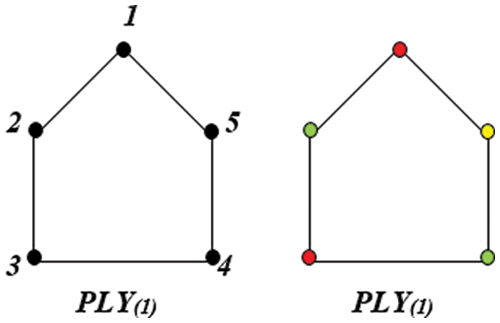
Figure 1: Polythiophene at n = 1

Figure 2: Polythiophene at n = 2
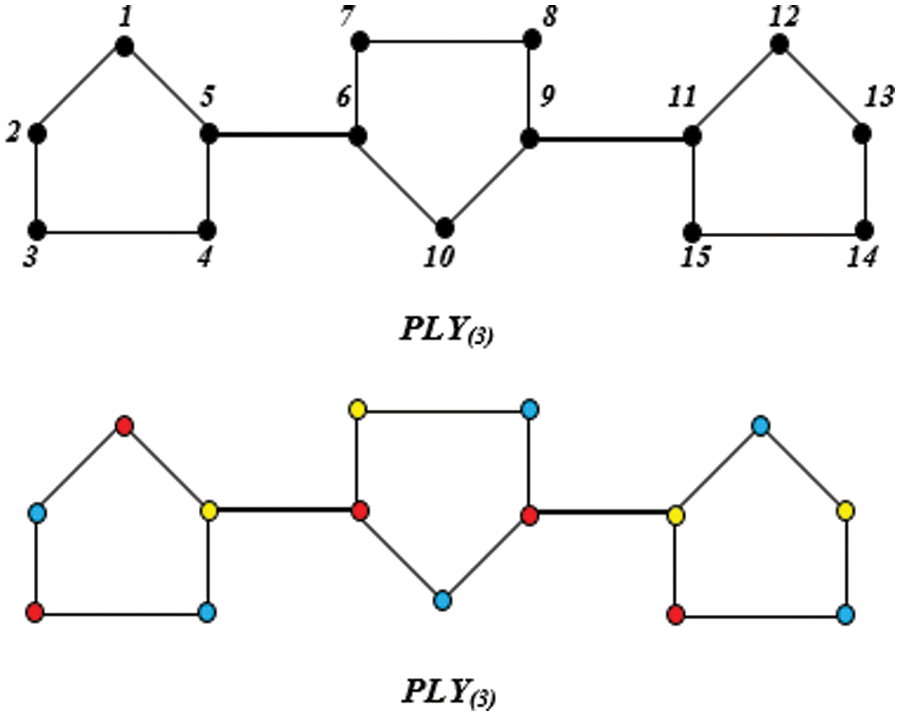
Figure 3: Polythiophene at n = 3



Adjacency matrices of PLY(n) for n = 1, 2, & 3 are given by:
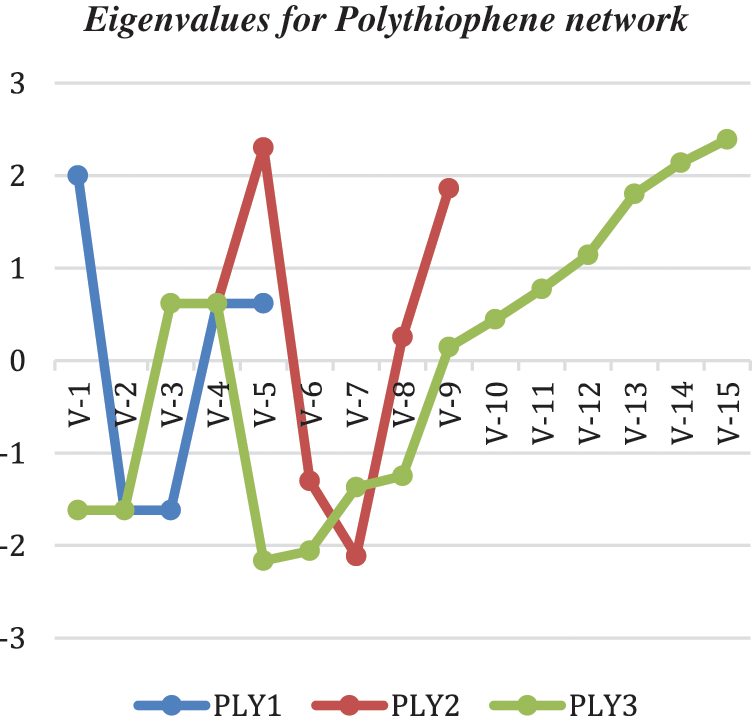
Graph 1: Eigenvalues for polythiophene network
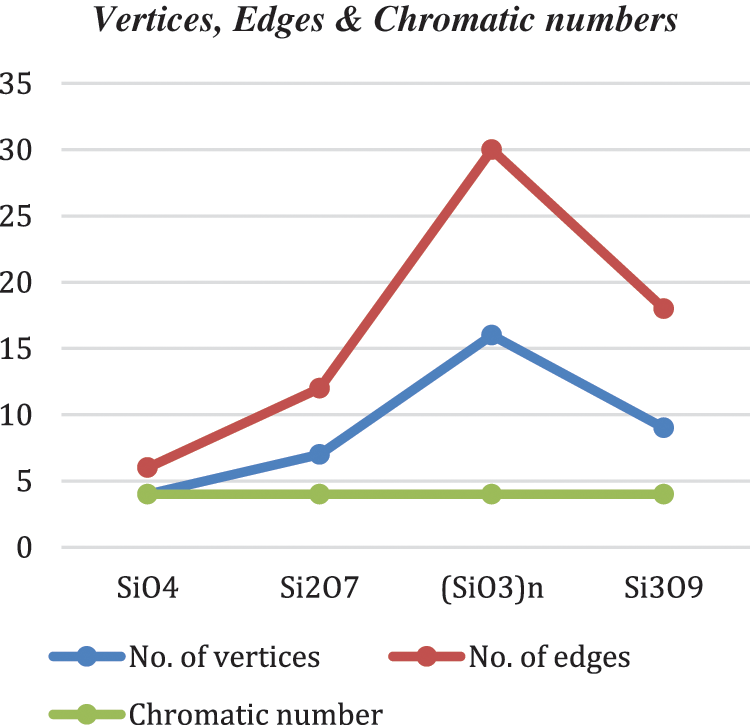
Graph 2: Vertices, edges & chromatic numbers
2.2 Different Silicates Networks
A silicate sheet is a ring of tetrahedrons which are joined by oxygen to other rings. A single and basic unit of silicate sheet is represented by SiO4 which is tetrahedron in shape just like a pyramid that has a base triangular in shape. It has one silicon atom surrounded by four oxygen atoms [6,7]. The topological structures of different silicates are studied and then identified equilateral properties of these different silicates. We consider the molecular structures of different silicates networks such as Orthosilicate (Nesosilicate)
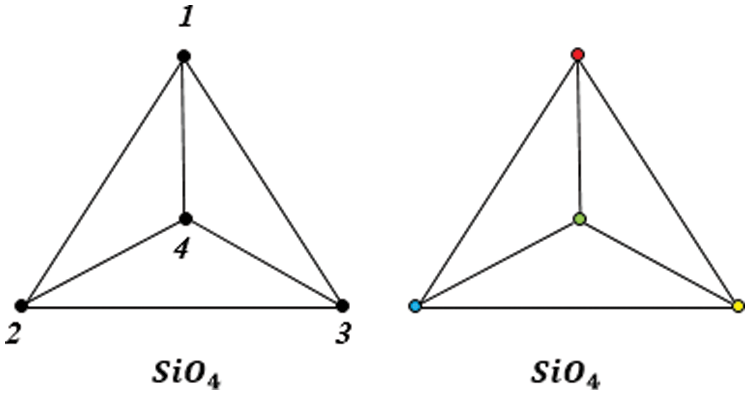
Figure 4: Orthosilicate
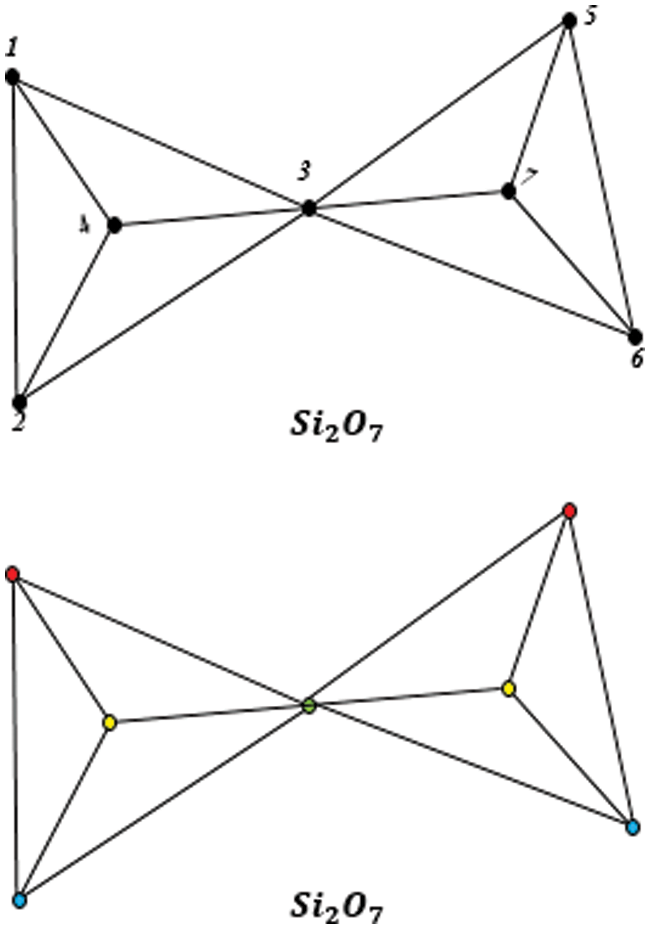
Figure 5: Pyrosilicates
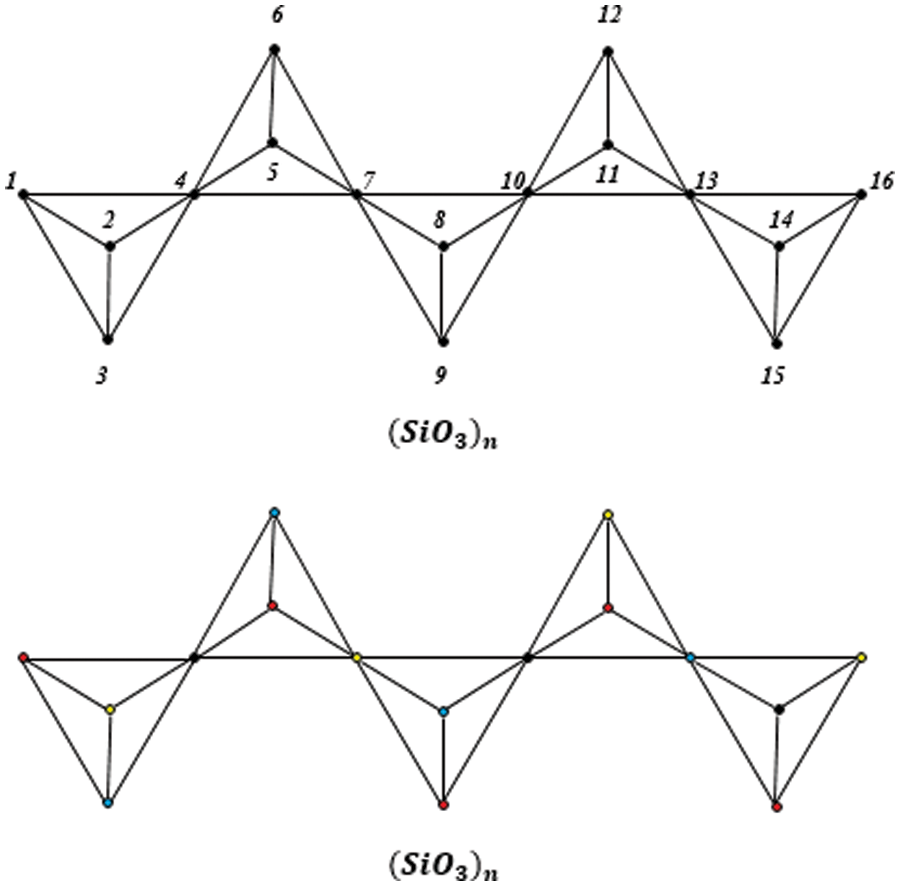
Figure 6: Pyroxenes

Figure 7: Ring silicates
Adjacency matrices of Orthosilicate (Nesosilicate)




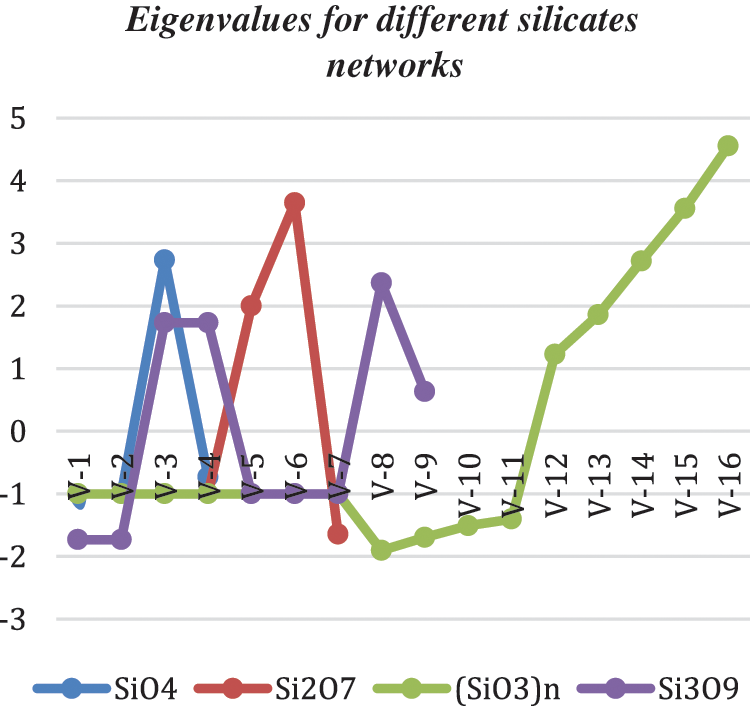
Graph 3: Eigenvalues for different silicates networks
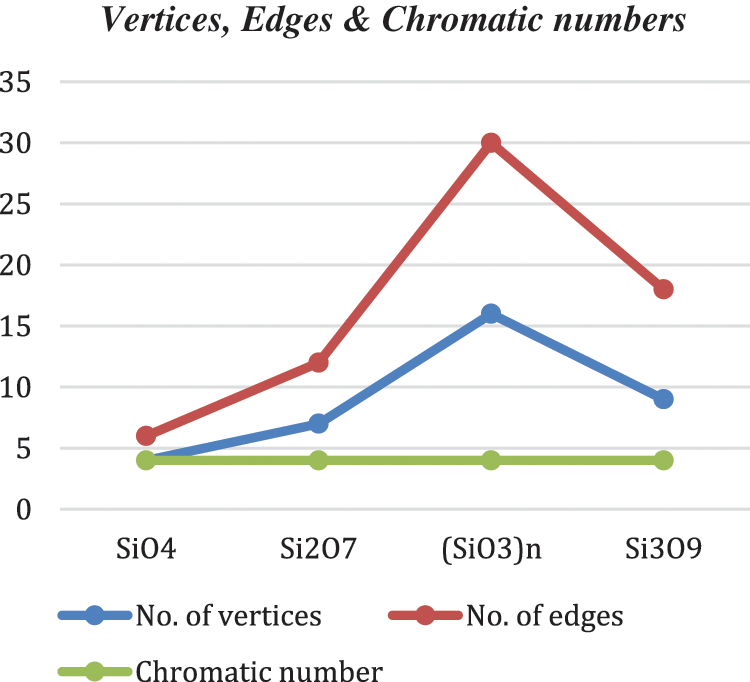
Graph 4: Vertices, edges & chromatic numbers
We have plotted different graphs based upon the computations of various molecular networks [8,9] such as Polythiophene network
Whereas eigenvalue tells us about the measurement of variance in a data and spread out of data on a line.

Graph 5: Largest and smallest eigenvalues for all networks
The eigenvector having largest eigenvalue is also known as a principal component. The eigenvalue which is less than 1 indicates that the principal component has a single original variable. The original variable had better value than new one. It will fit with factor rotation constructing a second factor which is associated with a single variable. The results obtained can be used for “discrete analogues of Cheeger’s inequality in differential geometry” [12]. The eigenvalue that is chosen as the smallest value is diligently associated to the categorization of graphs. The chromatic numbers (CN) [13,14] have also been utilized for a proper coloring of a graph.
Acknowledgement: The authors like to show their gratitude to the concerned persons for sharing their pearls of wisdom with us during this research work. Authors should thank those who contributed to the article but cannot include themselves.
Funding Statement: The authors received no specific funding for this study.
Conflicts of Interest: The authors declare that they have no conflicts of interest to report regarding the present study.
1. L. Von Collatz and U. Sinogowitz, “Spektren endlicher grafen,” in Abhandlungen Mathematical Seminar, Der Universitat Hamburg, Germany, pp. 63–77, 1957. [Google Scholar]
2. S. Hoory, N. Linial and A. Wigderson, “Expander graphs and their applications,” Bulletin of American Mathematical Society, vol. 43, no. 4, pp. 439–561, 2006. [Google Scholar]
3. M. Krivelevich and B. Sudakov, “Pseudo-random graphs,” Bolyai Society Mathematical Studies, vol. 15, pp. 199–262, 2006. [Google Scholar]
4. M. H. Aftab, M. Rafaqat, M. Hussain and T. Zia, “On the computation of some topological descriptors to find closed formulas for certain chemical graphs,” Journal of Chemistry, vol. 2021, pp. 1–16, 2021. [Google Scholar]
5. Y. Kongyang, C. Xiaosong, J. Zhepeng, Z. Cong, W. Dacheng et al., “Two-dimensional cross-linked polythiophene network,” Journal of Materials Chemistry C, vol. 7, pp. 9362–9368, 2019. [Google Scholar]
6. P. Manuel and I. Rajasingh, “Topological properties of silicate networks,” in 5th IEEE GCC Conf. and Exhibition, Kuwait, March, pp. 16–19, 2009. [Google Scholar]
7. F. Simonraj and A. George, “Topological properties of few poly oxide, poly silicate, dox and dsl networks,” International Journal of Future Computer and Communication, vol. 2, no. 2, pp. 90–95, 2013. [Google Scholar]
8. M. H. Aftab, M. Rafaqat and M. Hussain, “On the computation of topological indices for molecular structures of subdivided aztec diamonds,” Computational Journal of Combinatorial Mathematics, vol. 2021, no. 2, pp. 13–20, 2021. [Google Scholar]
9. M. H. Aftab, M. Rafaqat and M. Hussain, “Topological invariants for the general structure of grape seed proanthocyanidins,” Punjab University Journal of Mathematics, vol. 54, no. 1, pp. 45–53, 2022. [Google Scholar]
10. N. Alon, “Eigenvalues and expanders,” Combinatorica, vol. 6, no. 2, pp. 83–96, 1986. [Google Scholar]
11. N. Alon and V. D. Milman, “
12. B. Colbois and A. M. Matei, “On the optimality of J. cheeger and P. buser inequalities,” Differential Geometry and its Applications, vol. 19, no. 3, pp. 281–293, 2003. [Google Scholar]
13. L. A. Sz´ekely, “Measurable chromatic number of geometric graphs and sets without some distances in Euclidean space,” Combinatorica, vol. 4, pp. 213–218, 1984. [Google Scholar]
14. A. Ali, G. Chartrand and P. Zhang, “Irregularity in graphs,” Springer Briefs in Mathematics, 1st edition, vol. 2021, pp. 1–109, 2021. [Google Scholar]
 | This work is licensed under a Creative Commons Attribution 4.0 International License, which permits unrestricted use, distribution, and reproduction in any medium, provided the original work is properly cited. |